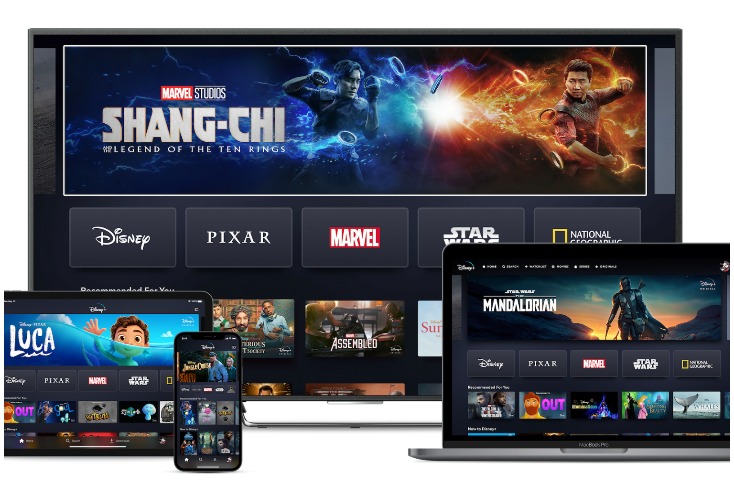Disney+ subscriber growth led by international markets

Global paid subscribers for Disney+ grew by 37% year-on-year, with most of that growth coming from international markets, the entertainment giant’s latest quarterly figures show.
In its financial earnings for Q1 2022, the Walt Disney Company reported its direct-to-consumer platforms, including Disney+, Disney+ Hotstar, ESPN+ and Hulu now have a total of 196.4 million subscribers.
The revenues of these subscription video-on-demand (SVOD) products increased by 34% to $4.7bn, but an increase in costs for programming and production meant that its operating loss got bigger to $600m.
Disney+ added 11.8 million subscribers globally in the quarter ending 1 January 2022 and has grown its average monthly revenue per paid subscriber from $5.80 to $6.68 compared to 2021.
Within that figure, the number of paid Disney+ subscribers in the US and Canada increased from 36.3 million in January 2021 to 42.9 million in January 2022 (+18%).
Subscribers in the US are able to access Disney+, ESPN+ and Hulu as separate services or as a package, “the SVOD bundle”.
This increase was behind international markets where the streaming platform is available in more than 80 countries and territories.
There are some differences in Disney+ branding and content offering worldwide as in India and southeast Asian countries it is called Disney+ Hotstar and in Latin America Disney+ is accompanied by Star+, a general entertainment SVOD service.
Disney+ international paid subscriber numbers grew by 40% to $41.1m (this excludes Disney+ Hotstar).
The latter service had the largest jump in subscribers from 29.2 million to 45.9 million (+57%).
Linear network revenues, which include the US network ABC, for the quarter were “essentially flat” year on year for the quarter at $7.7bn.
Disney CEO on streaming price increases and the ‘metaverse’
Looking forward, Bob Chapek CEO said in the subsequent earnings call: “One of the goals was to go ahead and ensure that we had a new title every week, and we’ve achieved that, but by 2023, we want to get to a steady state, which is even higher than we have right now.”
“I think that will give us the impetus to increase that price/value relationship even higher and then have the flexibility if we were to so choose to then look at price increases on our service.”
“But it’s all about content, content, content and we are bullish about our future content going forward, not only in terms of quality, but also in terms of quantity and that’s really what’s driving our bullishness for what we might see as the pricing power that we would have going forward,” he added.
Christine McCarthy, SVP, president and chief financial officer, noted Disney+ is less than two-and-a-half years into the business and will evaluate the “price value equation” and refine the business model going forward based on what consumers are watching, consumption patterns and repeatability.
When asked about future moves into the so-called “metaverse”, Chapek revealed that the concept, in which aspects of the physical world are translated into virtual media, is “top of mind” for Disney.
He explained: “We realise that in the future, you can call it what you want, you want to call it Metaverse, you want to call it the blending of the physical and digital experiences, which I think Disney should excel at.”
NOW READ:
We should happily pay Netflix more to rein in Jimmy Carr
Amazon Prime Video is catching Netflix at an ‘astonishing’ rate
How Disney+ and Netflix rivalry is moving beyond streaming
Disney+ takes viewing time and share from Netflix, says IPA Touchpoints
BARB: Netflix’s Squid Game among UK’s most-watched shows in October




